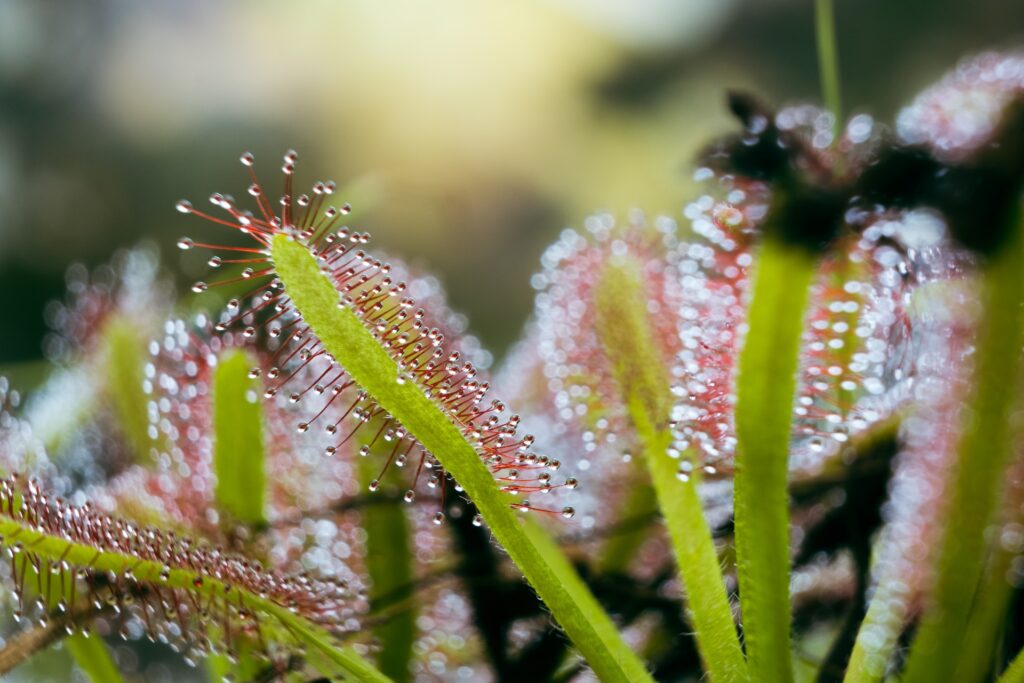Introduction: The sundew plant, a true marvel of nature, is a captivating insectivorous species that has fascinated botanists and nature enthusiasts for centuries. With its glistening dew-like drops and the ability to entrap insects, the sundew stands as a testament to the wonders of evolution. In this comprehensive guide, we delve into the intriguing world of sundew plants, exploring their diverse species, fascinating adaptations, and ecological significance. Join us on this journey as we unlock the secrets of the sundew plant.
Sundew Plant: An Overview
What Is a Sundew Plant?
Sundew plants, scientifically known as Drosera, are a group of carnivorous plants found in various parts of the world. They are renowned for their unique adaptation to nutrient-poor environments.
- The Sundew Plant: A Natural Insectivore The sundew plant is nature’s very own insectivore. It has evolved to supplement its nutrient intake by trapping and digesting insects.
- Sundew Species Diversity There are over 200 different sundew species, each with its unique characteristics and preferences for specific habitats.
The Distribution of Sundew Plants
Sundew plants are not bound by geography. They are distributed across the globe, showcasing their adaptability.
- Sundew Plants Worldwide Explore the diverse ecosystems where sundew plants thrive, from North and South America to Australia and Africa.
- Sundew Habitats Learn about the specific environmental niches that sundew plants inhabit, from boggy wetlands to rocky outcrops.
Anatomy and Adaptations
The Anatomy of a Sundew Plant
To understand how sundew plants catch their prey, we must explore their remarkable anatomy.
- Leaf Structure Delve into the intricacies of sundew leaves, equipped with sticky glands that capture unsuspecting insects.
- Tentacles and Glands Discover the tentacles and glands that make sundew plants efficient insect catchers.
Sundew’s Sticky Strategy
Sundew’s adaptation to insect trapping is a wonder of evolution.
- Attraction Mechanism Learn how sundew lures insects with glistening droplets that resemble morning dew.
- Insect Capture and Digestion Explore the process of how sundew plants ensnare, digest, and extract nutrients from their prey.
Types of Sundew Plants
Drosera Capensis
Capensis, also known as the Cape sundew, is a popular sundew species cherished by carnivorous plant enthusiasts.
- Cape Sundew Appearance Take a closer look at the unique appearance of the Drosera capensis.
- Cultivation and Care Learn how to cultivate and care for your own Cape sundew, making it a striking addition to your plant collection.
Drosera Rotundifolia
Rotundifolia, commonly known as the round-leaved sundew, is another captivating member of the sundew family.
- Round-Leaved Sundew in the Wild Understand the habitat and distribution of this species in its natural environment.
- Round-Leaved Sundew in Captivity Explore the challenges and rewards of keeping Drosera rotundifolia as a houseplant.
Ecological Significance
Sundew Plants and Their Ecosystem Role
These insectivorous plants play a crucial role in their ecosystems, contributing to biodiversity and nutrient cycling.
- Pest Control Learn how sundew plants help control insect populations in their habitats, maintaining ecological balance.
- Biodiversity Enhancement Discover how sundew plants indirectly support other organisms in their ecosystems.
Conservation Efforts
The Need for Sundew Plant Conservation
As some sundew species face habitat loss and endangerment, conservation efforts are vital.
- Threats to Sundew Plants Explore the various threats facing sundew plants, from habitat destruction to illegal collection.
- Conservation Initiatives Learn about organizations and individuals dedicated to safeguarding sundew plants and their habitats.
FAQs
What is the lifespan of a sundew plant?
Sundew plants typically live for 3 to 5 years, but their longevity can vary based on species and care.
Can sundew plants be grown indoors?
Yes, many sundew species can thrive indoors under the right conditions, such as high humidity and bright, indirect sunlight.
Are sundew plants difficult to care for?
Sundew plants are generally low-maintenance, making them suitable for both novice and experienced plant enthusiasts.
Do sundew plants harm the ecosystem by trapping insects?
No, sundew plants are a natural part of their ecosystems and play a role in maintaining insect populations and nutrient cycling.
Are there any legal restrictions on owning sundew plants?
Ownership of sundew plants is subject to local laws and regulations, so it’s important to research and comply with these rules.
What is the significance of sundew plants for scientific research?
Sundew plants have been a subject of extensive research, offering insights into plant evolution, adaptations, and ecology.
Conclusion
The sundew plant, with its carnivorous tendencies and striking appearance, has earned its place as one of nature’s most captivating wonders. From its unique adaptations to its vital role in maintaining ecosystem balance, sundew plants are not just botanical marvels but also integral members of their respective habitats. As we continue to explore the diverse world of plants, the sundew plant stands out as a true testament to the wonders of evolution and the intricate relationships between species in the natural world.
Intrigued by the sundew’s natural marvel? Whether you’re a seasoned plant enthusiast or a novice, consider adding a sundew plant to your collection. Its unique features and ecological importance make it a valuable addition to any home or garden. As you care for your sundew, you’ll become part of the ongoing story of this extraordinary insectivore.

